The Colosseum was the Roman Empire’s largest amphitheater, but it was not the largest stadium. That title belonged to Circus Maximus, situated just over half a kilometer southwest of the Colosseum.
Circus Maximus was the first stadium the Romans built. The stadium was originally constructed in the 6th century BCE, but reached its final form only during the time of Julius Caesar in the middle of the 1st century BCE. Caesar extended the seating tiers to run all around the oval circuit, barring only the starting gates and the twin entrances at the stadium’s two ends. The tracks were more than 600 meters long and 150 meters wide. The stadium had a seating capacity between 150,000 and 250,000, according to various sources.
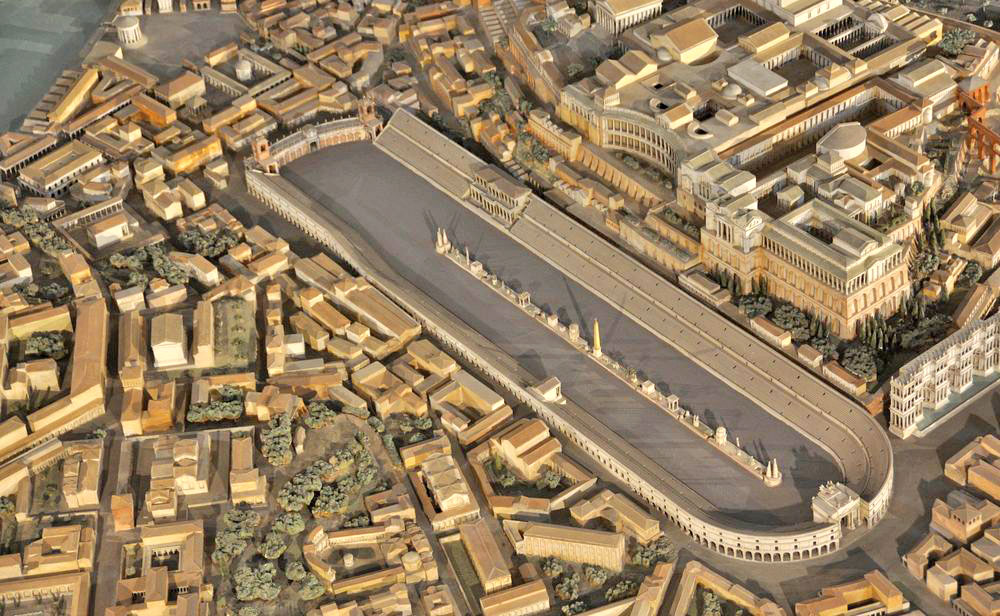
A model of Circus Maximus. Photo: Livius.org
The primary function of Circus Maximus was to hold chariot races and Roman games, called Ludi, held in honor of the gods. Games were a popular form of entertainment during Roman times. Days on which ludi were held were declared public holidays, and no business could be conducted. It’s remarkable that the Romans got any work done because ludi were held throughout the year. Sometimes, as many as 135 days were spent on these entertainments in a single year.
Ludi included horse and chariot racing, athletics, plays and recitals, beast-hunts and gladiator fights, as well as religious ceremonies and public feasts. Many of these were held at Circus Maximus. These events opened with a grand and flamboyant parade where the purpose of the games were stated and the participants were introduced. Chariot races were the most extravagant events. At the beginning of the race, chariots were lined up at one end of the tracks, and then the emperor would drop a cloth signaling the beginning of the race. At once the gates would spring open and competitors would sprint forward, attempting the cut each other and cause the other to crash into the spinae, a barrier that ran down the center of the tracks. The spinae was elaborately decorated with statues, obelisks and columns.
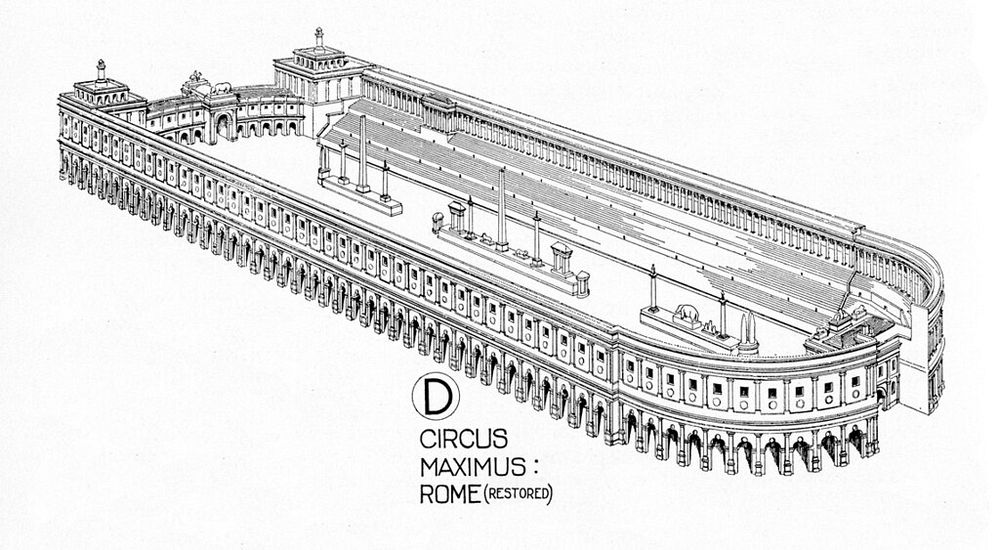
Image credit: Penn State University Library
Other events, especially those involving wild animals and gladiator fights, were equally dramatic. In 169 BCE, a beast-hunt was organized using 63 leopards and 40 bears and elephants. Another time, the Roman general Pompey organized a contest between a group of gladiators and 20 elephants.
When the Colosseum was constructed in the late 1st century AD, it began to hold the city's gladiator shows and smaller beast-hunts, and most track-athletes competed at the purpose-designed Stadium of Domitian. Circus Maximus continued to hold chariot races, until 549 AD, when the last race took place. The site then fell into disuse. The locals cannibalized the structure and carried off stones and other building materials. Floods buried the lower level with alluvial soil and accumulated debris. The original tracks now lie 6 meters underneath. Over the centuries the site was used for various purposes, becoming a market in the 16th century, a gasworks in the 19th century, and eventually a modern public park where concerts and meetings are now hosted.
Very little of the original building remains today. Sections of the seating and one end of the curved tracks are all that is visible.
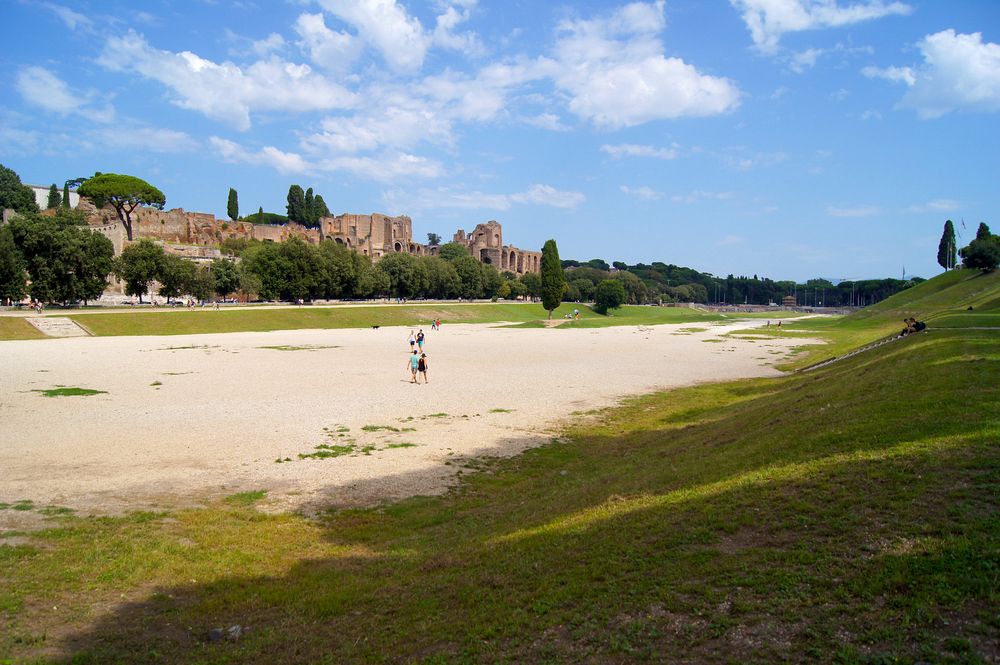
Photo: Byron T./Flickr
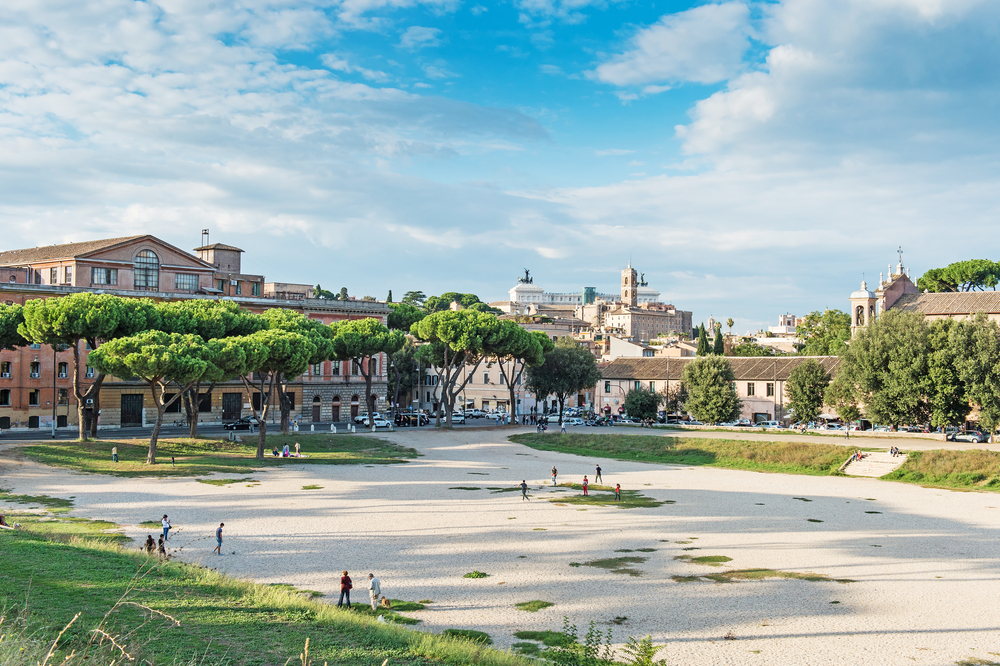
Photo: Lena Ivanova/Shutterstock.com
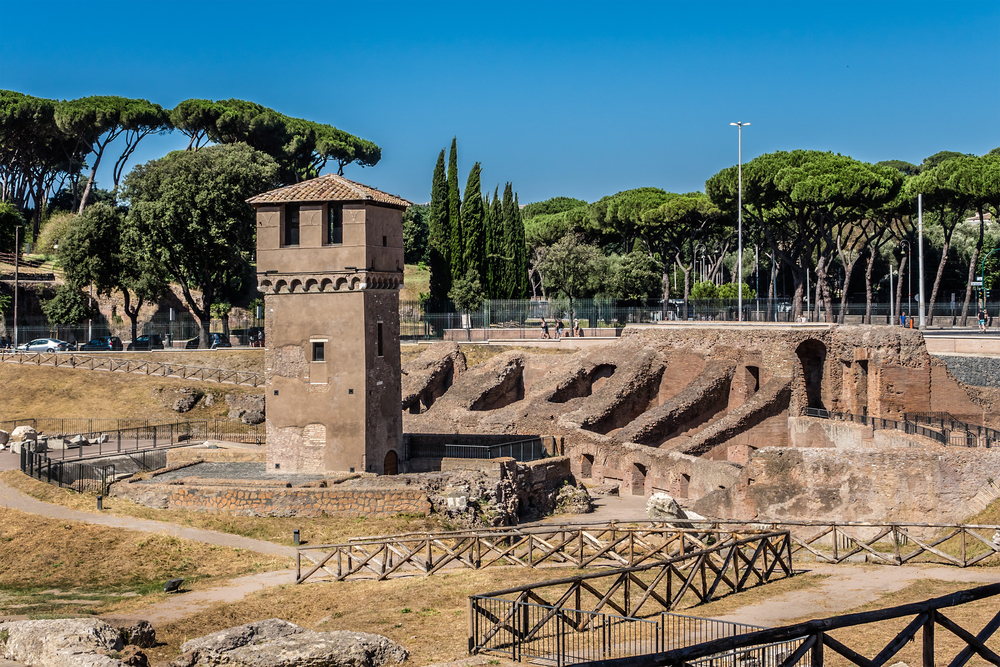
View of Circus Maximus. The tower is of medieval origin. Photo: Kiev.Victor/Shutterstock.com
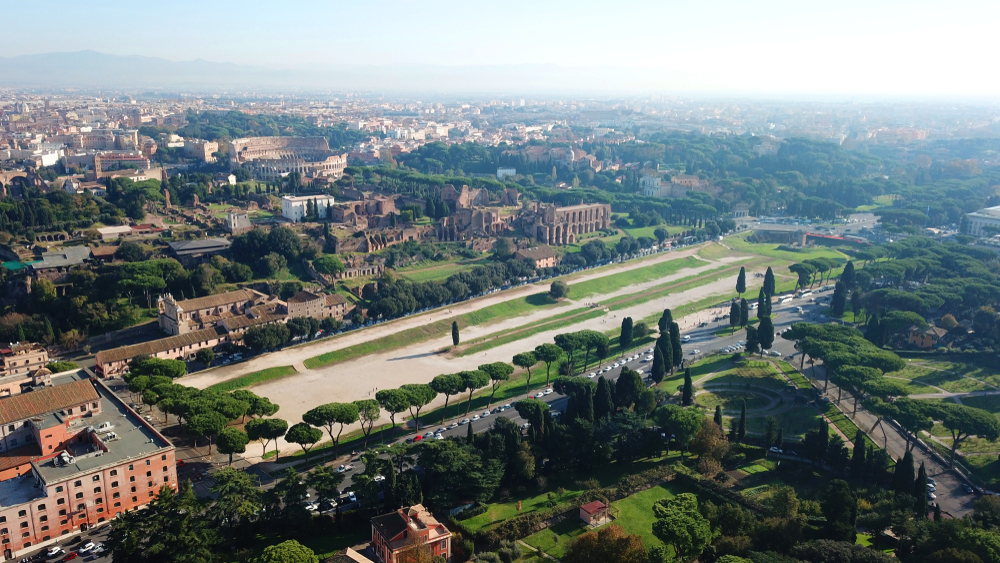
Aerial photo of Circus Maximus. Photo: Aerial-motion/Shutterstock.com
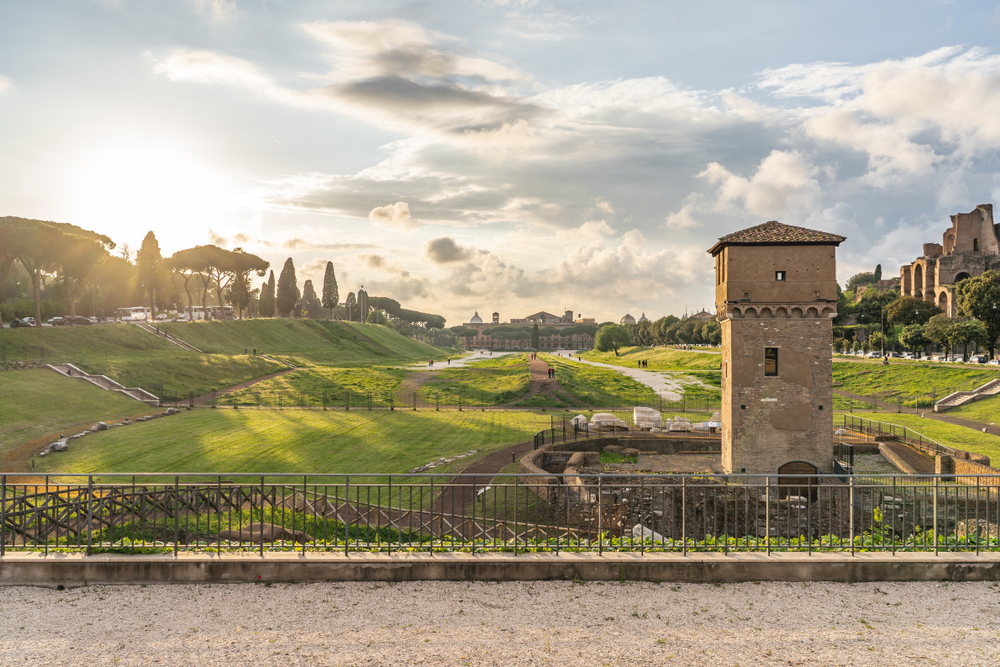
View of the Circus. The tower in the foreground is part of a medieval fortification. Photo: Gerald H/Shutterstock.com



Comments
Post a Comment